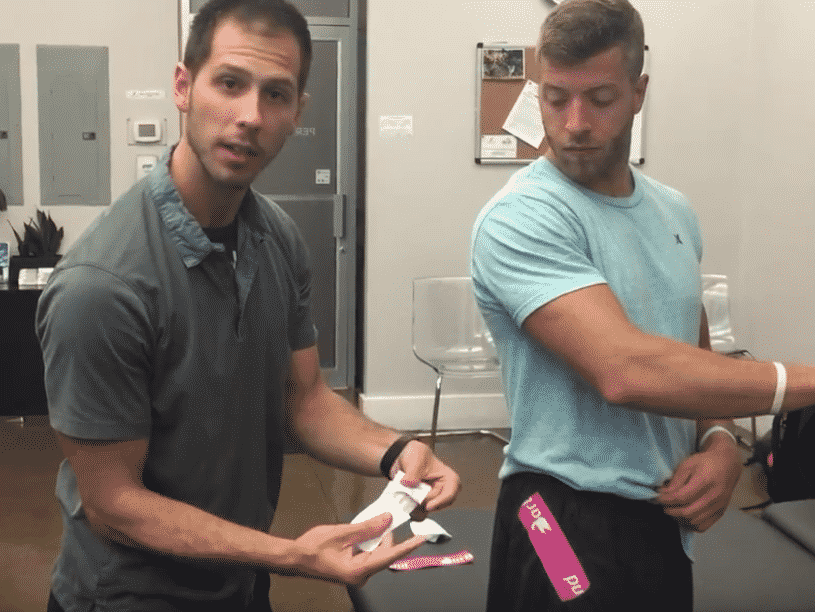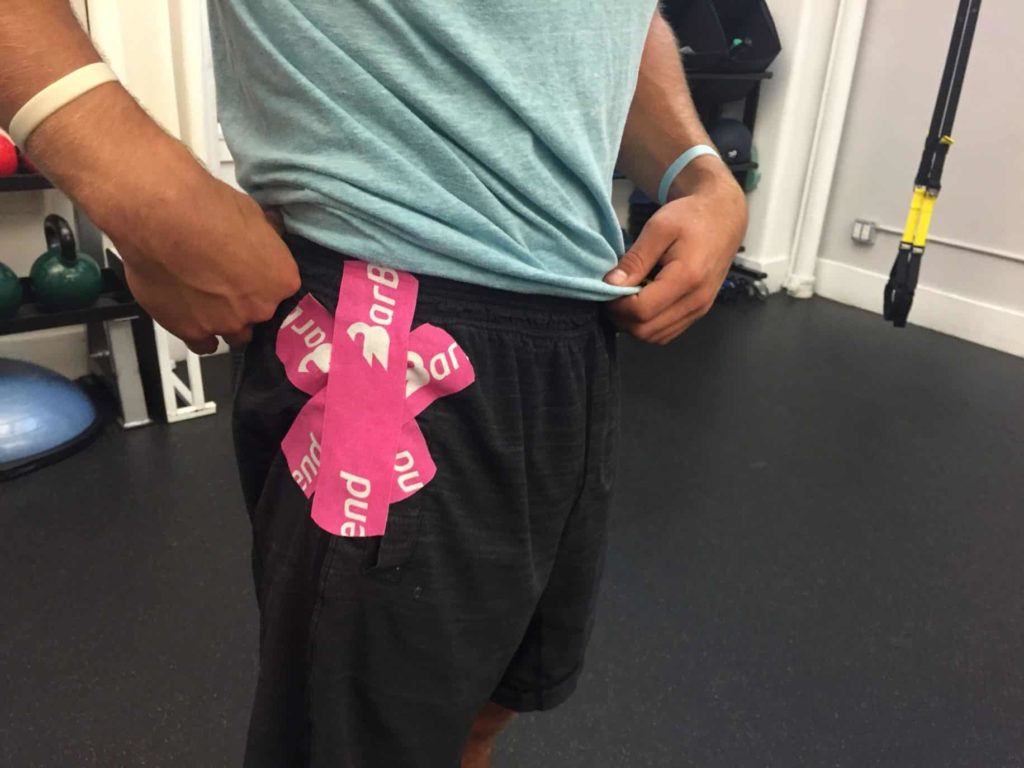Hip pain, whether chronic or acute, can be a troublesome problem for strength athletes. Lower body power and strength based movements are often heavily influenced by the hips, and their abilities to support one’s power. A painful hip can influence range of motion, which will impact squats, triple extension, and much more.
One way to potentially counter hip pain is with kinesiology tape and its proprioceptive abilities. To assist us with an easy hip pain taping technique, we reached out to Joe Gambino, PT, DPT, and CSCS at Perfect Stride Physical Therapy, New York City. Check out the video and descriptive taping method below.
Note: All motions shown are for informational purposes only. We highly recommend consulting with a medical professional to treat any injury or lasting tightness/discomfort as a result of athletic activity. The information in this article and video is not meant to prevent or cure any disease or injury. It’s always a good idea to consult with a medical professional or trainer before attempting any new training methodology. If you experience any sharp pain while exercising, discontinue movements immediately.
Why Tape the Hip?
There are multiple reasons a strength athlete might tape the hip. For this taping method we’ll be focusing on the Iliotibial Band (ligament that runs down the side of the leg) and the musculature that surrounds this area. Overuse is one of the main reasons an athlete may experience hip discomfort. Check out the anatomical landmarks we’ll hit in our taping below.
- Iliotibial Band
- Tensor Fascia Latae
- Sartorius
The taping method below can be used to assist hip movement by providing proprioceptive needs.
1. Iliotibial Band Star
To begin, an athlete will cut three strips of tape between 6-8 inches in length, or the length of the hand. Next, the athlete will round the edges of each strip of tape, so the corners don’t snag on clothing.
The tape’s placement will be dependent on where an athlete experiences pain and discomfort along the Iliotibial Band. Once the pain point is located, the athlete will take one strip of tape and tear it in the middle, similar to a bandaid leaving 2-inch anchors on each side. The middle of this strip will be placed on the area of pain, then the athlete will apply a 20-50% stretch on each side of the tape. After, the athlete will rub it in for adhesive purposes.

The second strip will be placed in on the pain point in similar manner with a 20-50%, then adequate rub in. This strip once placed will resemble an ex on the athlete. The last piece will be applied similarly to the first two, and will result in what looks like asterics symbol.

Tips for Hip Taping with Kinesiology Tape
- Create Equal Tension: Each strip should have a similar level of tension, which will vary between 20-50%.
- Proprioception: Gambino stated that tape itself isn’t the cure for pain, but it’s a facilitator for the body’s perception of it. The skin is very sensitive and the tape’s ability to create tension will give the brain feedback to decrease discomfort.
- Even Strips: When using three strips of tape for taping the hip, make sure to cut three pieces in similar length to ensure an equal fit..
- Hair and Taking It Off: If you’re excessively hairy in a specific area, then you’ll pull off little pieces at a time, and use your hand to gently repeatedly chop the tape off (in a karate chopping motion). You can also pinch the skin to release some of the tapes tension, while taking it off in a partitioned manner.
- Cut the Edges: The final tip was the cut the edges of the tape, so it’s rounded. This will prevent the corners from getting caught on edges of clothes and shoes.
Final Hip Taping Considerations
Kinesiology tape isn’t meant to cure or eradicate hip pain, but help alleviate discomfort. The Iliotibial Band can be a troublesome ligament when it comes to overuse for many athletes, so tape may be a useful method for limiting intra-workout discomfort.